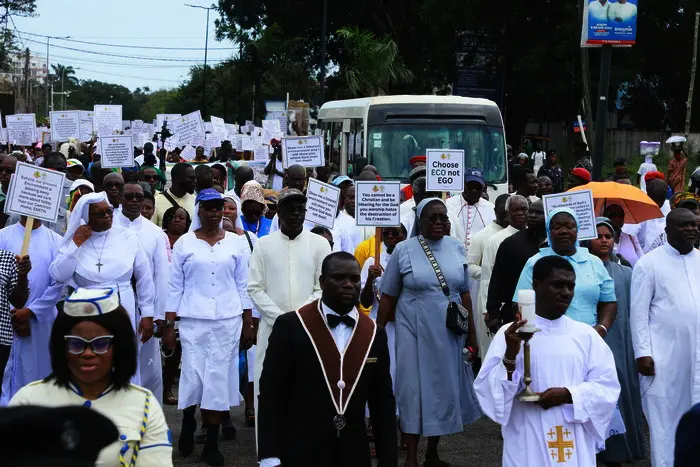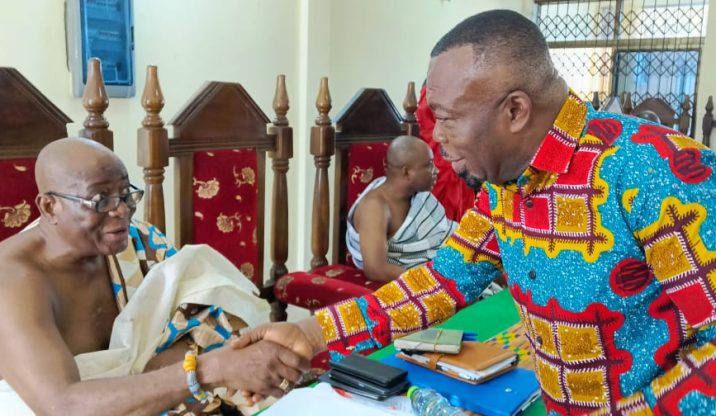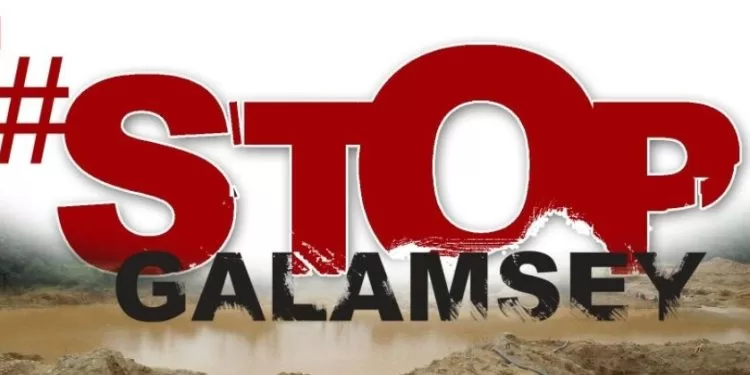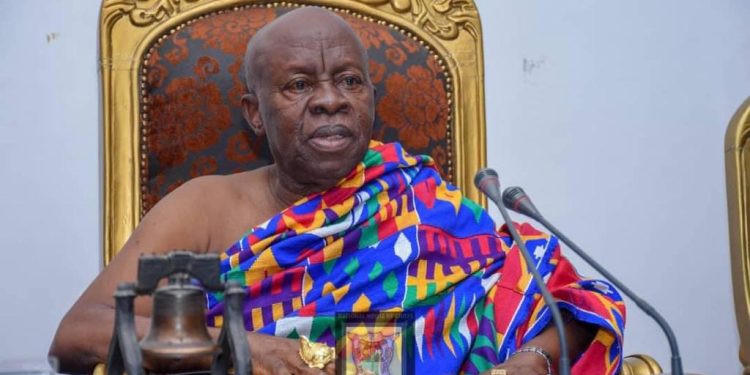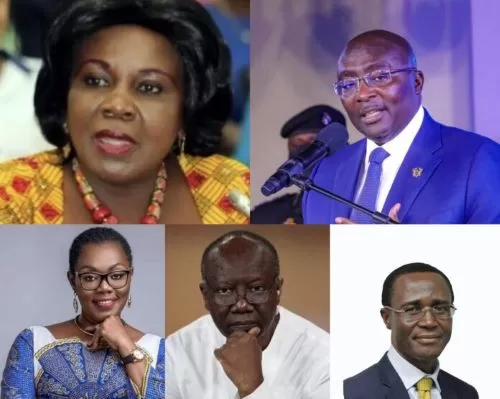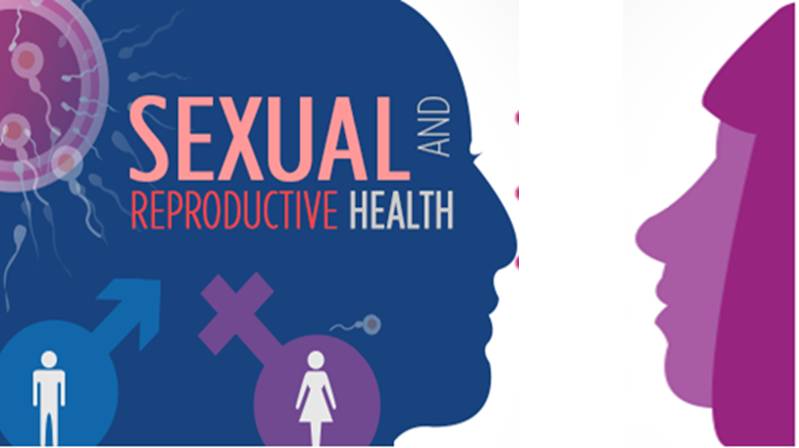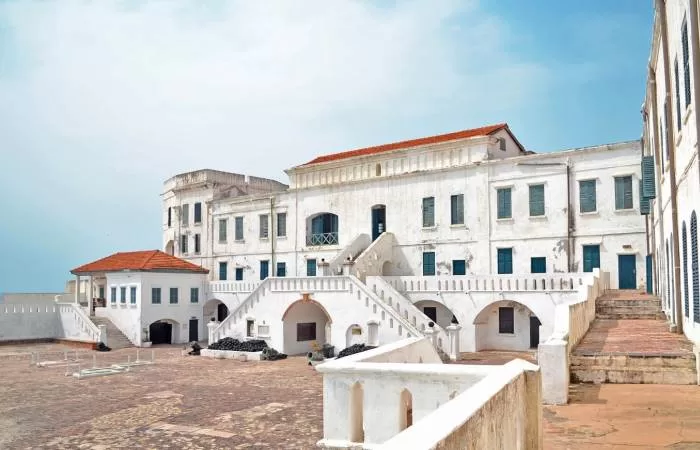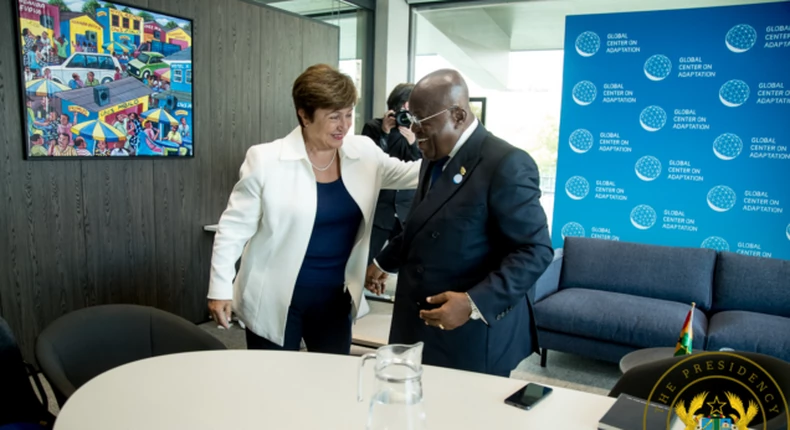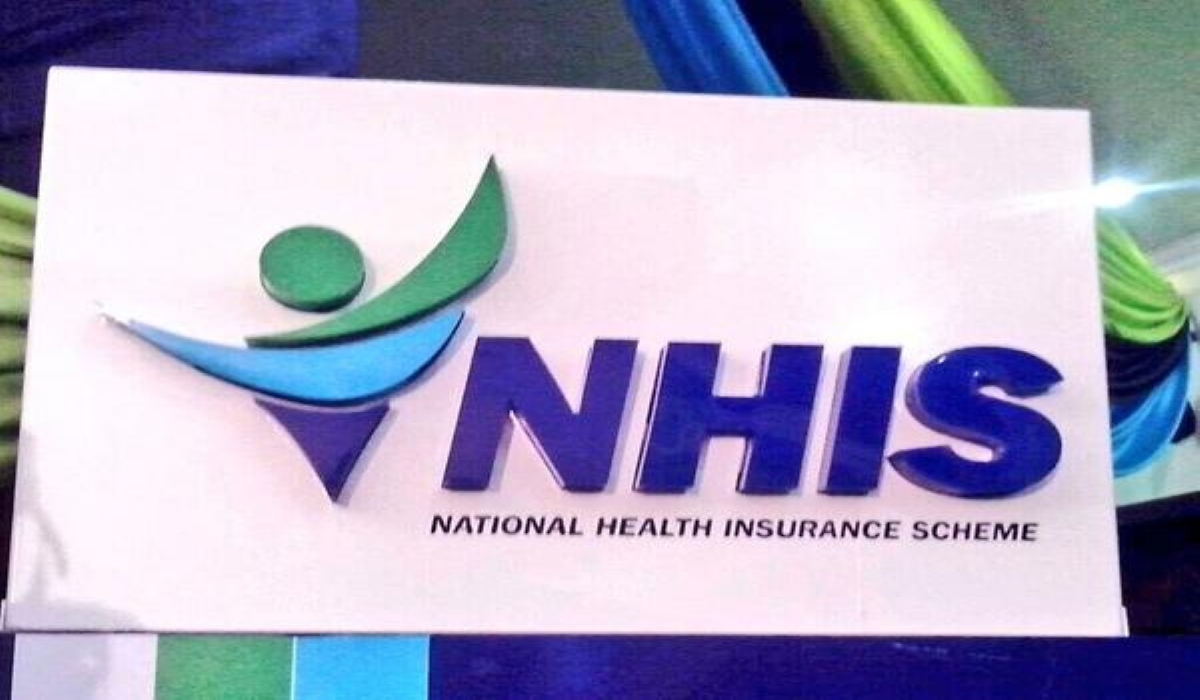Ghana is set to receive “immediate disbursement” of the second tranche of US$600 million under its three-year programme with the International Monetary Fund (IMF).
This follows the Executive Board of IMF’s completion of the First review of the $3 billion Extended Credit Facility Arrangement, which was approved by the Board on May, 17, 2023 , as well as the 2023 Article IV Consultation with Ghana.
“The completion of the first ECF review allows for an immediate disbursement of SDR 451.4 million (about US$600 million), bringing Ghana’s total disbursements under the arrangement to about US$1.2 billion,” the IMF said in a statement on Friday.
According to the fund, the authorities’ reforms are bearing fruit, and signs of economic stabilization are emerging.
“Growth in 2023 has proven resilient, inflation has declined, and the fiscal and external positions have improved. Progress is also being made on debt restructuring, with the domestic debt exchange completed over the summer and an agreement recently reached on the restructuring of official bilateral debt,” the statement said.
It also acknowledged how recent severe external shocks compounded pre-existing fiscal and debt vulnerabilities, which it said exacerbated such volatility and leading to acute economic and financial pressures in 2022.
The approval was made possible after Ghana reached an agreement with the Official Creditor Committee co chaired by France and China to restructure debts of US 5.4 billion.
Find the IMF statement below
IMF Executive Board Concludes 2023 Article IV Consultation with Ghana and Completes First Review under the Extended Credit Facility Arrangement
January 19, 2024
- The IMF Executive Board today completed the 2023 Article IV consultation and the first review of Ghana’s 36-month Extended Credit Facility arrangement. Approval of the first review enables the immediate disbursement of SDR 451.4 million (about US$600 million).
- Ghana’s performance under the program has been strong. All quantitative performance criteria for the first review and almost all indicative targets and structural benchmarks were met.
- The authorities’ reforms are bearing fruit, and signs of economic stabilization are emerging. Growth in 2023 has proven resilient, inflation has declined, and the fiscal and external positions have improved. Progress is also being made on debt restructuring, with the domestic debt exchange completed over the summer and an agreement recently reached on the restructuring of official bilateral debt.
Washington, DC: The Executive Board of the International Monetary Fund (IMF) completed today the First review of the $3 billion, 36-month Extended Credit Facility (ECF) Arrangement, which was approved by the Board on May, 17, 2023 , as well as the 2023 Article IV Consultation with Ghana. The completion of the first ECF review allows for an immediate disbursement of SDR 451.4 million (about US$600 million), bringing Ghana’s total disbursements under the arrangement to about US$1.2 billion.
Ghana’s economic performance has been marked by significant volatility over the years. Episodes of strong growth and overall macroeconomic stability were undermined by rising inflation, exchange rate depreciation, and loss of external buffers, in turn largely reflecting overly accommodative fiscal policies. Most recently, severe external shocks compounded pre-existing fiscal and debt vulnerabilities, exacerbating such volatility and leading to acute economic and financial pressures in 2022.
The authorities’ reform program has been designed to respond to immediate pressures and pave the way for a more resilient and prosperous economy. The ECF arrangement has provided a framework to implement the authorities’ policy and reform strategy to restore macroeconomic stability and debt sustainability, address long standing vulnerabilities, and lay the foundations for higher and more inclusive growth.
Ghana’s performance under the program has been strong. All quantitative performance criteria for the first review and almost all indicative targets and structural benchmarks were met.
Consistent with the authorities’ commitments under the Fund-supported program, Ghana is on track to lower the fiscal primary deficit on a commitment basis by about 4 percentage points of GDP in 2023. Spending has remained within program limits. To help mitigate the impact of the crisis on the most vulnerable population, the authorities have significantly expanded social protection programs. On the revenue side, Ghana has met its non-oil revenue mobilization target.
The Ghanaian authorities are also making good progress on their debt restructuring strategy. Their domestic debt restructuring was completed over the summer. On January 12, 2024, the authorities reached an agreement with the Official Creditor Committee (OCC) under the G20’s Common Framework on a debt treatment that is in line with Fund program parameters. This agreement provided the financing assurances necessary for the Executive Board review to be completed.
Ambitious structural fiscal reforms are bolstering domestic revenues, improving spending efficiency, strengthening public financial and debt management, preserving financial sector stability, enhancing governance and transparency, and helping create an environment more conducive to private sector investment.
The authorities’ reform efforts are bearing fruit, and signs of economic stabilization are emerging. Growth in 2023 has proven resilient, inflation has declined, and the fiscal and external positions have improved.
Looking ahead, fully and durably restoring macroeconomic stability and debt sustainability and fostering a sustainable increase in economic growth and poverty reduction will require steadfast policy and reform implementation.
At the conclusion of the Executive Board’s discussion, Mr. Bo Li, Deputy Managing Director and Acting Chair, issued the following statement:
“Ghana’s economic performance has been marked by significant volatility over the years. Most recently, severe external shocks compounded pre existing fiscal and debt vulnerabilities, leading to acute economic and financial pressures in 2022. The authorities’ efforts to reorient macroeconomic policies, restructure debt, and initiate wide ranging reforms are already generating positive results, with growth more resilient than initially envisaged, inflation declining, the fiscal and external positions improving, and international reserves increasing.
“Fully and durably restoring macroeconomic stability and debt sustainability and fostering higher and more inclusive growth require steadfast policy and reform implementation. The government’s plans to further reduce deficits by mobilizing additional domestic revenue and streamlining expenditure and to finalize its comprehensive debt restructuring are critical to underpin debt sustainability and ease financing constraints. Continued efforts to protect the vulnerable and to create space for higher social and development spending are also key. Reforms to improve tax administration, strengthen expenditure control and management of arrears, enhance fiscal rules and institutions, and improve SOEs management are needed to ensure lasting adjustment.
“The authorities took decisive steps to rein in inflation and rebuild foreign reserve buffers. Maintaining an appropriately tight monetary stance and enhancing exchange rate flexibility are key to achieving the program’s objectives.
“Bank of Ghana had deployed its regulatory and supervisory tools to mitigate the impact of the domestic debt restructuring on financial institutions. The authorities’ strategy aimed at maintaining a sound financial sector, drawing on new resources from the private sector, government, and multilaterals to rapidly rebuild financial buffers, is welcome. Ensuring full implementation of bank recapitalization plans and addressing legacy issues in the financial sector will be important.
“Reforms to create an environment more conducive to private investment are needed to enhance the economy’s potential and underpin sustainable job creation. Given Ghana’s exposure to climate shocks, promoting a green recovery by further advancing the adaptation and mitigation agendas should also remain a priority.”
Ghana: Selected Economic and Financial Indicators, 2022–28
| 2022 | 2023 | 2024 | 2025 | 2026 | 2027 | 2028 | ||||||||||||||||||||||||||||||||||
| Actual | Proj. | Proj. | Proj. | Proj. | Proj. | Proj. | ||||||||||||||||||||||||||||||||||
| (annual percentage change, unless otherwise indicated) | ||||||||||||||||||||||||||||||||||||||||
| National accounts and prices | ||||||||||||||||||||||||||||||||||||||||
| GDP at constant prices | 3.1 | 2.3 | 2.8 | 4.4 | 4.9 | 5.0 | 5.0 | |||||||||||||||||||||||||||||||||
| Non-extractive GDP | 2.4 | 2.5 | 2.3 | 4.4 | 4.8 | 5.0 | 5.0 | |||||||||||||||||||||||||||||||||
| Extractive GDP | 8.1 | 0.4 | 6.2 | 4.2 | 5.9 | 5.0 | 5.0 | |||||||||||||||||||||||||||||||||
| Real GDP per capita | 0.9 | -0.3 | 0.2 | 1.8 | 2.3 | 2.4 | 2.4 | |||||||||||||||||||||||||||||||||
| GDP deflator | 28.2 | 36.3 | 20.2 | 10.9 | 7.5 | 7.5 | 7.5 | |||||||||||||||||||||||||||||||||
| Consumer price index (end of period) | 54.1 | 27.6 | 15.0 | 8.0 | 8.0 | 8.0 | 8.0 | |||||||||||||||||||||||||||||||||
| Consumer price index (annual average) | 31.9 | 40.2 | 22.3 | 11.5 | 8.0 | 8.0 | 8.0 | |||||||||||||||||||||||||||||||||
| (percent of GDP, unless otherwise indicated) | ||||||||||||||||||||||||||||||||||||||||
| Central government budget | ||||||||||||||||||||||||||||||||||||||||
| Revenue | 15.8 | 15.7 | 16.7 | 17.3 | 18.2 | 18.1 | 18.0 | |||||||||||||||||||||||||||||||||
| Expenditure (commitment basis) 1 | 27.7 | 20.4 | 21.7 | 21.6 | 21.8 | 21.2 | 21.1 | |||||||||||||||||||||||||||||||||
| Overall balance (commitment basis) 1 | -11.8 | -4.6 | -5.0 | -4.3 | -3.6 | -3.1 | -3.0 | |||||||||||||||||||||||||||||||||
| Primary balance (commitment basis) | -4.4 | -0.5 | 0.5 | 1.5 | 1.5 | 1.5 | 1.5 | |||||||||||||||||||||||||||||||||
| Non-oil primary balance (commitment basis) | -6.3 | -1.8 | -0.8 | 0.0 | 0.0 | 0.1 | 0.0 | |||||||||||||||||||||||||||||||||
| Public debt (gross) | 93.3 | 86.1 | 83.6 | 80.9 | 77.9 | 74.9 | 72.0 | |||||||||||||||||||||||||||||||||
| Domestic debt | 50.0 | 37.0 | 33.7 | 31.8 | 29.4 | 27.8 | 26.4 | |||||||||||||||||||||||||||||||||
| External debt | 43.3 | 49.1 | 49.9 | 49.1 | 48.6 | 47.1 | 45.6 | |||||||||||||||||||||||||||||||||
| (annual percentage change, unless otherwise indicated) | ||||||||||||||||||||||||||||||||||||||||
| Money and credit | ||||||||||||||||||||||||||||||||||||||||
| Credit to the private sector | 31.8 | 12.6 | 22.0 | 13.0 | 15.0 | 15.0 | 15.0 | |||||||||||||||||||||||||||||||||
| Broad money (M2+) | 32.9 | 22.8 | 17.4 | 16.9 | 16.0 | 16.0 | 16.0 | |||||||||||||||||||||||||||||||||
| Velocity (GDP/M2+, end of period) | 3.4 | 3.8 | 4.0 | 4.0 | 3.9 | 3.8 | 3.7 | |||||||||||||||||||||||||||||||||
| Base money | 57.3 | 6.0 | 17.4 | 12.1 | 13.6 | 11.5 | 13.8 | |||||||||||||||||||||||||||||||||
| Policy rate (in percent, end of period) | 27.0 | … | … | … | … | … | … | |||||||||||||||||||||||||||||||||
| (US$ million, unless otherwise indicated) | ||||||||||||||||||||||||||||||||||||||||
| External sector | ||||||||||||||||||||||||||||||||||||||||
| Current account balance (percent of GDP) | -2.1 | -1.7 | -1.9 | -2.2 | -2.4 | -2.4 | -2.4 | |||||||||||||||||||||||||||||||||
| BOP financing gap 2 | … | 4,216 | 3,312 | 3,910 | 3,321 | 1,410 | 937 | |||||||||||||||||||||||||||||||||
| IMF | … | 1,200 | 720 | 720 | 360 | 0 | 0 | |||||||||||||||||||||||||||||||||
| World Bank | … | 330 | 620 | 350 | 250 | 0 | 0 | |||||||||||||||||||||||||||||||||
| AfDB | 59 | 44 | 0 | 0 | 0 | 0 | ||||||||||||||||||||||||||||||||||
| Residual gap | … | 2,627 | 1,928 | 2,840 | 2,711 | 1,410 | 937 | |||||||||||||||||||||||||||||||||
| Gross international reserves (program) 3 | 1,441 | 2,388 | 3,852 | 5,501 | 7,677 | 9,250 | 10,874 | |||||||||||||||||||||||||||||||||
| in months of prospective imports | 0.7 | 1.1 | 1.7 | 2.3 | 3.0 | 3.5 | 3.9 | |||||||||||||||||||||||||||||||||
| Gross international reserves 4 | 6,238 | … | … | … | … | … | … | |||||||||||||||||||||||||||||||||
| Memorandum items: | ||||||||||||||||||||||||||||||||||||||||
| Nominal GDP (millions of GHc) | 610,222 | 850,656 | 1,050,978 | 1,216,854 | 1,372,186 | 1,548,313 | 1,746,882 | |||||||||||||||||||||||||||||||||
| Sources: Ghanaian authorities; and Fund staff estimates and projections. | ||||||||||||||||||||||||||||||||||||||||
| 1 Program approval interest expenditure projections corresponded to a pre- domestic and external debt restructuring scenario. Updated projections correspond to a post-domestic debt restructuring and pre-external debt restructuring scenario. | ||||||||||||||||||||||||||||||||||||||||
| 2 Additional financing needed to gradually bring reserves to at least 3 months of imports by 2026. | ||||||||||||||||||||||||||||||||||||||||
| 3 Excludes oil funds, encumbered assets, and pledged assets. | ||||||||||||||||||||||||||||||||||||||||
| 4 Includes oil funds, encumbered assets, and pledged assets. | ||||||||||||||||||||||||||||||||||||||||



